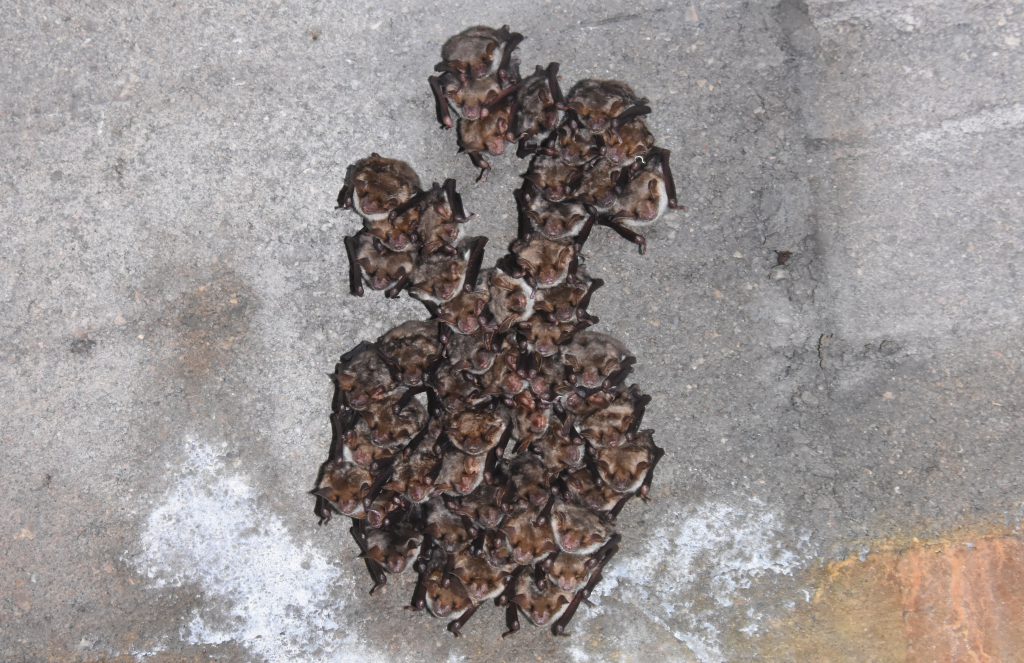In Switzerland, the Greater Mouse-eared Bat Myotis myotis is a vulnerable bat species with highest national priority. The species is classified as a forest target species because it forages mainly in forest habitats in many areas of Switzerland and Central Europe. As typical groundgleaning bats, the Greater Mouse-eared Bats prefer woodland patches free of undergrowth, where they fly close to the ground in search of large arthropods (mainly carabid beetles). The aim of this case study was to document a supposed decline of suitable foraging habitats of the Greater Mouse-eared Bat as well as to underpin the urgency of habitat conservation, which has been largely neglected up to now. In addition, the study should create a suitable starting point for specific measures to promote the key habitats of this bat species.
Based on a study on foraging habitat selection in eastern Switzerland in the early 1990s, the forest structure of the Greater Mouse-eared Bat’s foraging grounds and of forest reference areas examined at the time was surveyed again after almost thirty years. The data revealed that today about half of the former forest foraging areas in the study area are no longer suitable for foraging Greater Mouse-eared Bats. Whereas in the past foraging grounds were consistently located in single-layered forests and were dominated by a freely accessible forest ground, today many of these areas have a distinct shrub layer. These changes in forest structure are likely to be in line with a general trend, as they were not only found in the Greater Mouse-eared Bat’s foraging areas, but also in similar way in the forest reference areas. Thus, the increase in understory and herbaceous vegetation can be interpreted as a general development for the forest stands studied, which were still single-layered forests almost thirty years ago.
Despite an overall positive population trend over the last thirty years, the populations of the Greater Mouse-eared Bat in the Swiss Plateau have tended to decline. The loss of nursery roosts is out of the question as a cause, as practically no roosts have been lost since the 1980s thanks to professionally supervised renovations. It is likely that the reason for the gradual regional population decline is to be found in the lasting loss of suitable foraging habitats. Since forests are the most important foraging habitats for the Greater Mouse-eared Bat in Central Europe, the decline of single-layered forests with little or missing undergrowth is probably the main cause. To prevent a further habitat loss, specific measures must be implemented as soon as possible, which go beyond the current conservation of nursery roosts and now also include improving the availability of foraging habitats of the Greater Mouse-eared Bat. The most important step is the conservation of still existing foraging habitats. However, the restoration and creation of new suitable forest areas could also be effective approaches.
[Abstract]
Original study:
Güttinger, R., Bader, E. & Krättli, H. (2022): Jagdlebensräume des Grossen Mausohrs Myotis myotis in der Ostschweiz: Markanter Rückgang geeigneter Waldflächen innert drei Jahrzehnten. Berichte der St. Gallischen Naturwissenschaftlichen Gesellschaft, 94, 451–464.

